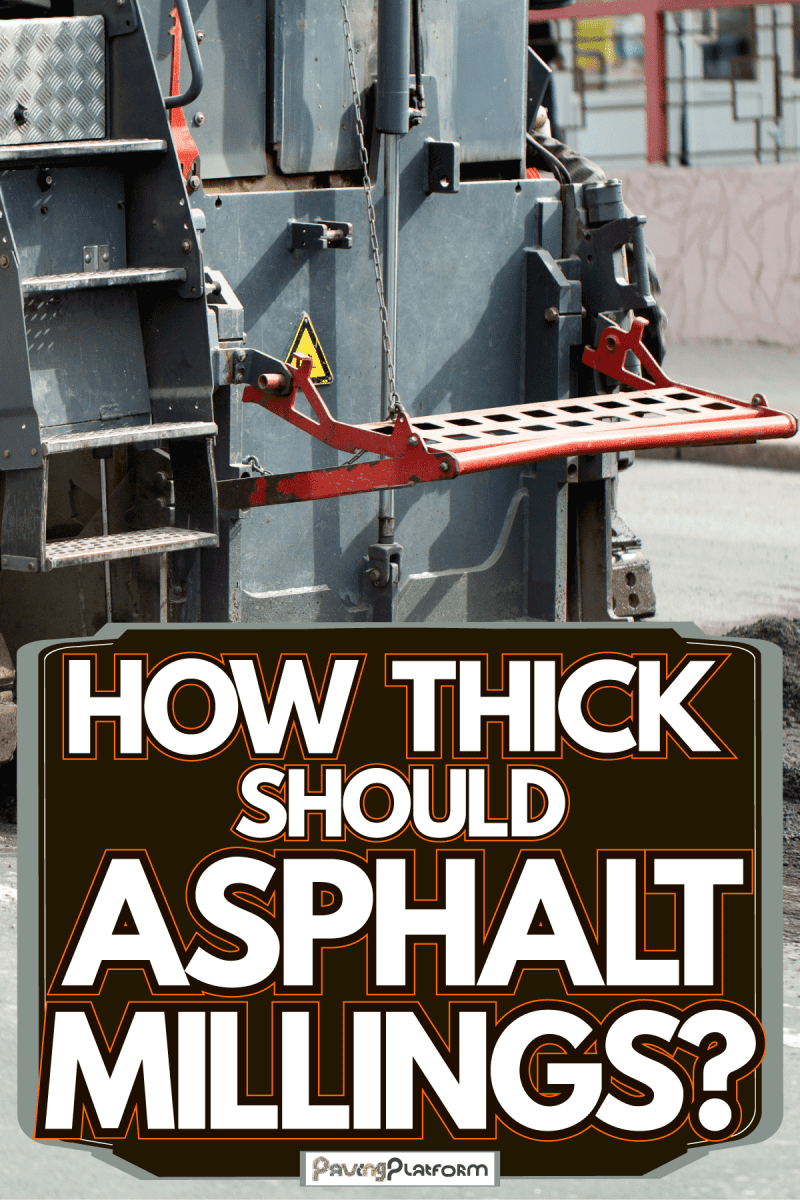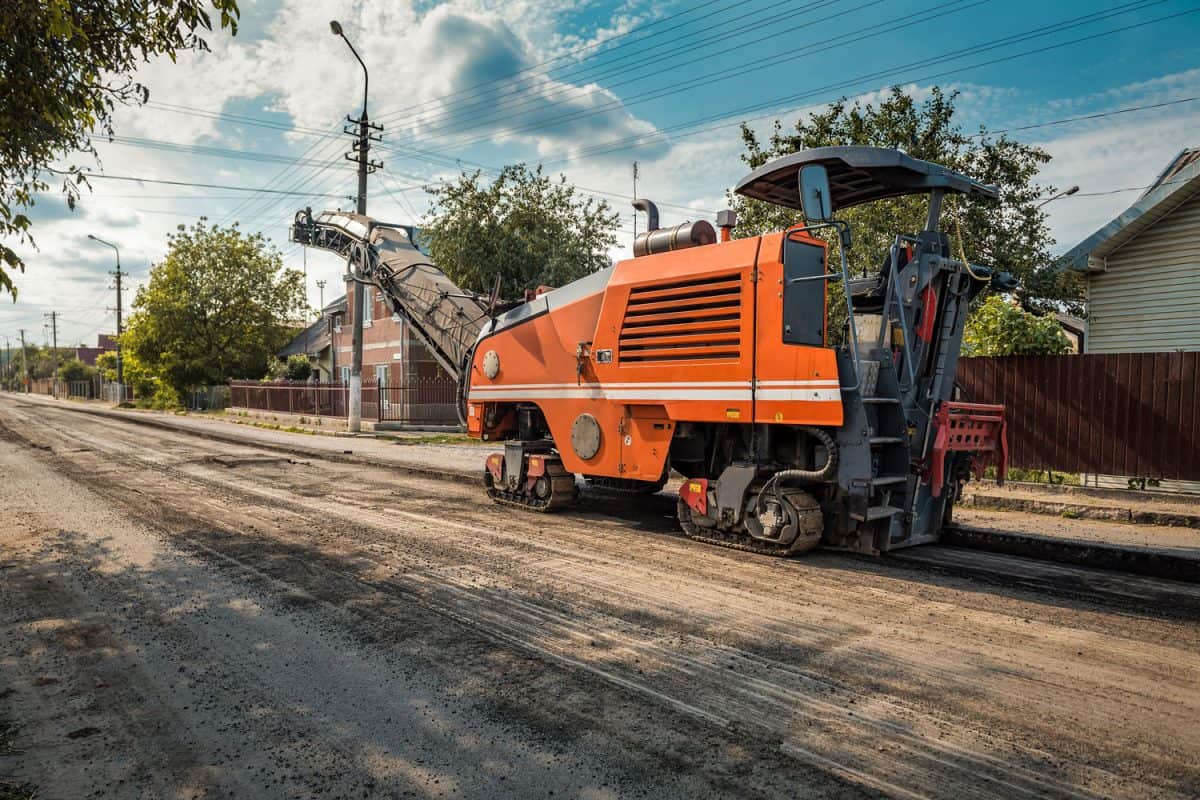Disclosure: We may get commissions for purchases made through links in this post.
Asphalt millings, when made with the right thickness, can function well and are much better than using other materials. And the thing you want to know here is the specific thickness of the asphalt millings that you should use for every pavement. Good thing, we have already sifted through the internet to bring you the information you want to know.
The average thickness of asphalt millings is between 2-6 inches. But, the thickness would depend technically on what you are going to use it for, such as:
- Road resurfacing
- Residential driveways
- Parking lots and commercial driveways
- Heavy-duty lots and commercial driveways
We will elaborate further on those purposes mentioned above. Also, there are a lot of things about asphalt millings that we want to share with you so we suggest you keep reading for the details.

Road Resurfacing
The asphalt to use in resurfacing existing roads should be at least 2 inches thick. This will involve the removal of the current surface and replacing it with newly introduced asphalt millings. Although, this actually is the last resort particularly on busy highways since it is very time-consuming and extensive.

Residential Driveways
Typically, 2-3 inches of asphalt millings is what we need for this application, with 3 inches being appropriate for occasional heavy equipment or large trucks. And there should be a 6-8 inch thick granular base aggregate underneath it.
Parking Lots And Commercial Driveways
Parking lots need to have a 6-inch granular base aggregate while commercial driveways need to have 8 inches. And the asphalt millings that those two need should be 3 inches. It needs to have good soil drainage underneath to function well.

Heavy Duty Lots And Commercial Driveways
Commercial driveways that handle large trucks on a frequent basis or if it is near loading docks should have binder layers and a distinct finish which leads to a total of 4-7 inches of asphalt millings thickness. While heavy-duty commercial lots should use at least 3 inches of aggregate base and 6 inches of asphalt millings for stronger structure.
Disadvantages Of Thin Asphalt Millings
Think of asphalt millings as rubber sheets, they will easily rip out under heavy loads. That is why you should install it with the proper thickness so that the weight of the loads will be spread out by the material's natural flexibility.

When the asphalt millings are too thin, the weight can't be distributed and will squeeze the material underneath the tire. This will result to having cracks that will eventually grow larger and spread outwards. This will deteriorate even before the life cycle of the asphalt milling is over.
Advantages Of Asphalt Millings
- Compared to reconstruction, this is much less expensive.
- On the same stretch of pavement, you can repeat millings as often as it needs.
- Using asphalt millings is environmentally friendly since it is recycled crushed asphalt.
- This can save customers time and money since it is faster than removing existing pavement with traditional equipment.
- This can cause only a little disruption to the flow of traffic. Also, in most cases, it can reopen to the traffic immediately.
- It can preserve the pavement's grade and slope.
- Since asphalt millings materials come from asphalt, it is also durable, which means it is a flexible base with a long lifespan.
- This can somehow prevent flooding on the driveways since it is capable of witstanding rain and snow.
- Millings don't only have a long life cycle, they are also appealing to the eyes.
- Asphalt millings are weather resistant. It can become soft during tremendous heat and breakable during extreme cold but it can still manage to be firm.
- It produces less dirt and dust than gravel.
- Asphalt millings can harden and form stronger structures over time.
What Is The Difference Of Asphalt Paving And Asphalt Millings?
All over the world, asphalt is the most common material that we use for surfacing airports, driveways, roads, etc. Asphalt paving and asphalt milling are just similar when it comes to rehabilitation and construction of roads, but are totally different in terms of process.
You can refer to asphalt paving as the process of filling a surface with asphalt. First, it requires laying the asphalt flat and using the equipment called a paver to smooth it. Second, it needs compaction with the use of a roller.
Meanwhile, when you see a built-up layer of deteriorated asphalt, it is now the situation to use the asphalt millings. It might require a full-depth removal or just a surface depth where it needs to be smoothened. Also, it demands the grinding of the existing asphalt to make tiny gravels.
Fact: Asphalt millings are also known as RAP.
How To Mill Asphalt?
You can mill asphalt when there is a resurfacing task or road repair that needs to be done. The process needs a cold milling machine that digs up the occurring asphalt surfaces. Also, this machine is human-operated. And the substrates it collects will go through the grinder and be crushed.
The milling machine sifts the crushed asphalt into a specific size, usually between 1-1.25 inches, and then moves it to the discharge conveyor that is located in the forepart of the machine. After this, the conveyor will now transfer the milled asphalt into a truck that is in front of the milling machine.

When full, the load is conveyed to a temporary stockpile that will be used for whatever is needed to be filled with those asphalt millings.
It is unavoidable that there will be some excess milling in a certain project. So, it is advisable to go to a trader or roadbuilder's maintenance depot for resale.
How Long Do Asphalt Millings Last?
The lifespan of asphalt millings may depend upon the installation if we are to install it properly with the right thickness and allow enough time to harden. Given wear and tear, it can last 20 up to 30 years with slight maintenance.
When To Use Asphalt Millings?
- When there is a visible crack on the paving surface that allows water to penetrate. This will result in deterioration of the paving surface from the top down.
- When you see a shoving section in the top layer of the asphalt.
- When the pavement is showing moderate to severe signs of crack brought by the loss of base or overloading traffic.
- If your pavement doesn't allow water to drain properly, especially when it is in a drainage area.
If you see even only one of the signs above, consider calling a contractor to have your pavement checked. Don't wait any longer for it to wear out.
How To Harden Asphalt Millings?
Fortunately, asphalt millings can settle even without using heat. It can make itself hard by just using ambient temperature. But of course, you still need to compact it to make sure that you have a firmly stable driveway.
In Conclusion

When we talk about asphalt millings, always remember that the key to a well-functioning pavement is always the proper installation. In other words, in any reconstruction or resurfacing project, the right thickness will be the basis of a stronger structure.
We have enlarged the scope of the information about asphalt millings for you to understand and know it better. Our purpose is not only to answer your questions but to help you decide whether should you try to have asphalt milled pavements in the future or not.
But before doing so, make certain to look over the building regulations in your community that might restrain the usage of asphalt millings.
We hope our post helped you big time. And if you like, you can watch out for our future posts below since we are still thoroughly searching for the answers just for you!



![Two manual workers helping to level the asphalt surface for a steamroller to press, Types Of Asphalt [And How To Choose For Your Driveway Or Walkway]](https://pavingplatform.com/wp-content/uploads/2022/03/Two-manual-workers-helping-to-level-the-asphalt-surface-for-a-steamroller-to-press-600x400.jpg)